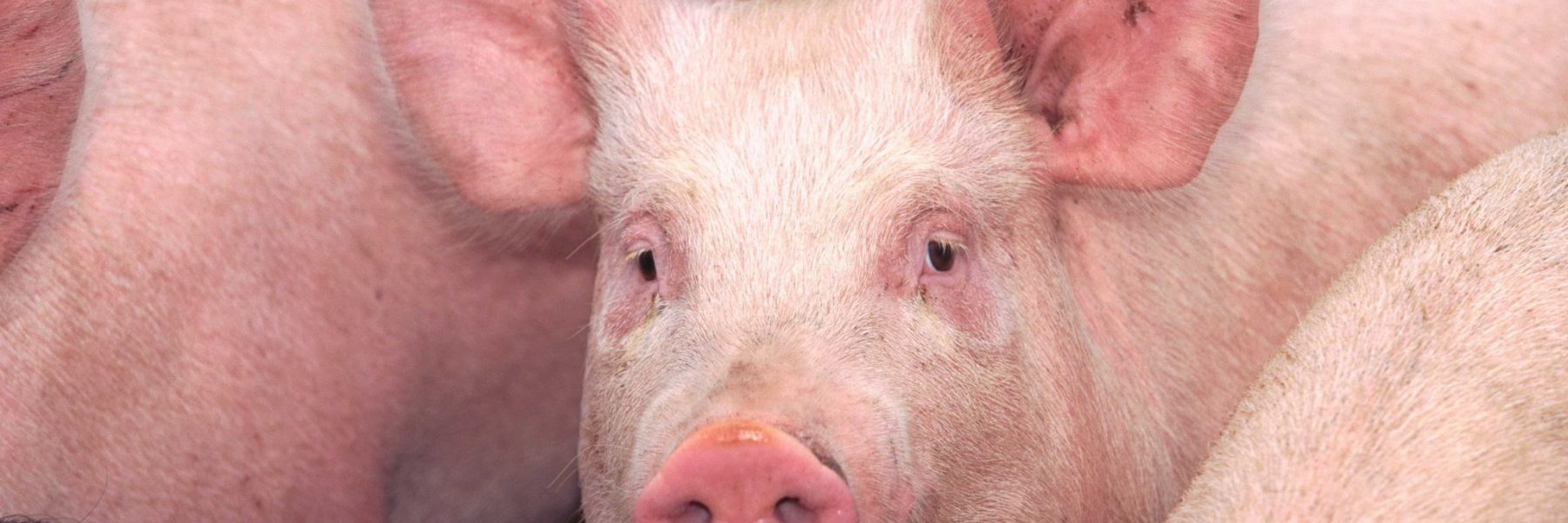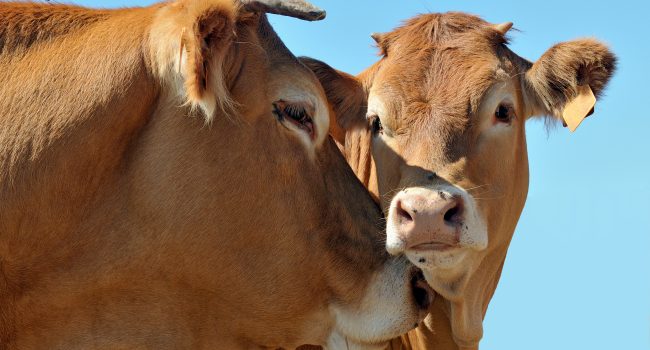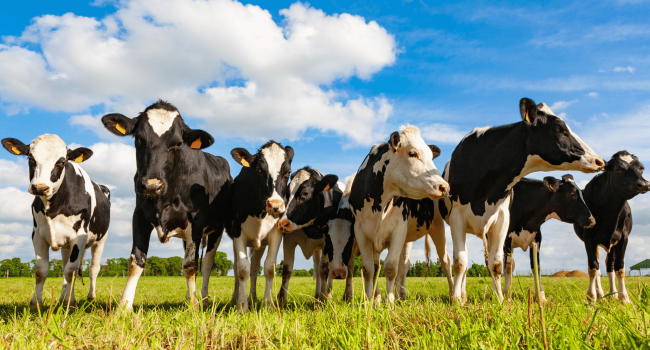Consequences of heat stress on swine
Pigs are sensitive to heat stress as they are homoeothermic animals, have few sweat gland and small lungs. In addition, genetics have been focusing for many years on the increase in performances instead of animals resistance and adaptation to different stresses.
To adapt to heat stress, pigs will first increase their heat dissipation and then reduce the heat production. This first step induces heat loss by conduction (blood flow will be diverted through extremity and heat will be dissipated through the skin by sprawling out), and by evaporation (increase of the respiratory rate to decrease internal temperature).
The reduction in blood flow to the digestive tract can result in intestinal damage and reduced barrier function having for consequences gut inflammation and so the reduction of nutrients absorption. The second step, which consists in the reduction of the heat production, induces a reduction of physical activities but also of feed and water intake.
Independently to the decrease of feed intake, pigs employ other strategies to direct metabolism and energy. It is possible to observe an alteration of postabsorptive carbohydrate, lipid, and protein metabolism. A shift in carbohydrate metabolism, linked with changes of basal insulin levels, changes of hepatocyte and myocyte metabolism with differences in glucose valorization (production and use) and lack of fat mobilization from adipose tissue, leads to decrease the carcass value.
The thermoneutral zone of pigs is illustrated in the Figure 1 below (adapted from Baumgard et al. 2021) and extends from the lower critical temperature to the point where metabolic rate is actively reduced by heat stress – slightly below the upper critical temperature. The thermoneutral zone is also linked with the humidity level, expressed with the Temperature-Humidity Index (THI). THI is still the best, simplest and most practical index (or parameter) for measurement of environmental warmth which cause heat stress to the animals.
Figure representing the temperature zones of pigs depending of their weight and the ambiant temperature
Figure 1: Thermoneutral zone of pigs
Eggshell quality is a key component of overall egg quality and one that is of most concern to the producer, as shell breakage is the cause of 80 – 90% of downgraded eggs (Kay). Most of what makes an eggshell weak or strong has already been determined prior to the egg having been laid (Vlckova). These contributing factors are diverse and include: the age and breed of bird, housing system, nutrition, level of stress, and disease.
One of the most consistent factors in declining eggshell quality is the age of the hen. The size of the egg increases with age, while the actual percentage of eggshell compared to egg decreases. This leads to weaker eggshells and an increased need for calcium in older hens. At this time in a hen’s life, a deficiency in calcium leads to a reduction in both weight and strength of the eggshell (Galea).
Eggshell quality can be influenced by nutrition, namely providing enough calcium for older hens to help maximize their productive cycle. At the same time, careful attention must be paid to key components like phosphorus and Vitamin D. Both of these nutrients, while necessary in the diet, can cause weak eggshells if too much is included.
Moreover, genetic advances have given us the opportunity to extend the egg production cycle, which has affected eggshell quality. Therefore, with the modern genetic lines, we have to improve not only the whole production of eggs in terms of quantity, but also improving the quality of eggs (saleable eggs, for instance, to suit customer expectations).
Focus on heat stress impacts in sows
Only in US, heat stress is estimated to cost $900 million per year and only half of this loss comes from decreased performance in grower/finisher phase. The other half comes from impaired performance in the breeding stock including phases of infertility and also decreased milk production.
Different studies summarized the impacts of heat stress for sows, with similar conclusions. The most challenging situation is during the lactation period, where in the same pen it would be ideally needed 2 differentiated climate zones: a fresher one for the mother where we could ensure her welfare and thermoneutrality and a warmer one for the piglets. Thus, it means that, even in countries not considered as hot, sows suffer from the consequences of this situation.
Consequently, sows suffering from heat stress reduce their feed intake during the lactation period, which can lead to a negative energy balance, a loss of body condition but also to associated reproductive problems (inadequate ovarian function). They are very sensitive to heat stress and use various mechanisms to adapt, which have direct consequences on their health status but also on piglets at the end.
Indeed, the reduction of milk production can impact the weight of piglets at weaning. According to Quiniou and Noblet (1999), we could observe a decrease of 55 g/day of piglets Average Daily Gain if we compared piglets coming from sows which were in rooms at 18°C (ambient temperature) with the ones which in rooms at 29°C.
Today, various solutions are available on the market to reduce heat stress risks: from nutritional solutions to environmental management. In this context, an R&D trial was conducted in a Brazilian commercial farm (in São Paulo state in 2020) over two batches of sows for 2 months and half.
Two experimental groups (40 sows per group, weaning at 26 days) were compared over the whole lactation with a negative control (conventional lactating diet) vs a nutritional specialty developed by ADM. Sows were exposed to a constant temperature of 28°C during the whole lactation period.
In this trial we observed that the nutritional specialty participates to significantly (P=0.01) limit the body losses over the lactation. Indeed, the average of body losses in the control group was 41.2 kg compared to 29.4 kg in the tested group (-11.8 kg). As a consequence of the improved situation of the sows, another clear benefit that was observed is a reduction of preweaning mortality (from 12.6% of the control group to 5.6% in the specialty group).
During another R&D trial conducted in France in 2019 with a total of 43 sows from day 107 of gestation to weaning (21 days of lactation), the same nutritional specialty was tested vs a negative control. In this situation, sows were exposed to high temperature (28-29 °C during the day and 26°C at night).
It was observed an improvement of ADFI for sows in the FRESHUP group (+5.36%) for the overall lactation period (Figure 2). Consequently, backfat and loin depth mobilization were slightly lower. Also, litter weaning weight was numerically improved by +3.82% in this group.
Bar diagram representing average daily feed intake results
Figure 2: Average Daily Feed Intake results
In addition to a better feed intake, a better water intake was also observed: +10.9% for the tested group (34.6 L/day vs 31.2 for the control group).
A global approach of heat stress management
Nutritional solutions participate to a better heat stress management but cannot be the only one. A global and holistic approach is key to be sure to limit the negative impacts of heat stress on production. The ADM solution, FRESH UP is a tridimensional concept, which includes different and complementary tools :
a formulation support which is focused on optimization of current formulas for a better valorization of feed by pigs under high temperature
a technical support based on animal and environmental management
a connected device which collects environmental data and sends it to a platform where it is available in real time at any time in the user’s hand. The device sends alert messages when environmental parameters are dangerous for animals or staff but also predictive alerts to anticipate heat stress periods.
Once farm management strategies have been implemented, high quality feed additives may be considered as potential solutions for both repair of gut damage and increase the ability of the animal to cope with such an extreme environmental challenge. Based on the detected risks, FRESH UP provides a nutritional solution to manage this challenge.
This solution is a compound of a unique blend of natural and specific ingredients. It is formulated to manage the risks of leaky gut and gut inflammation.
One of the most effective ways to improve the structure of the gut is with certain additives that activate the sweet taste receptor T1R2/3 in the intestine, which stimulates the release of glucagon-like peptide (GLP)-2 from the enteroendocrine cells of the gut. GLP-2 is a potent gastroprotective agent that increases blood flow, stimulates mucosal growth and prevents cell death during challenging conditions.
Supplemented animals should have improved gut structure during heat stress but will also recover quicker.
As previously explained, a general approach is mandatory to better understand how to prevent the effects of high temperatures in swine production. Future research will certainly provide and improve current knowledge about this huge challenge.


